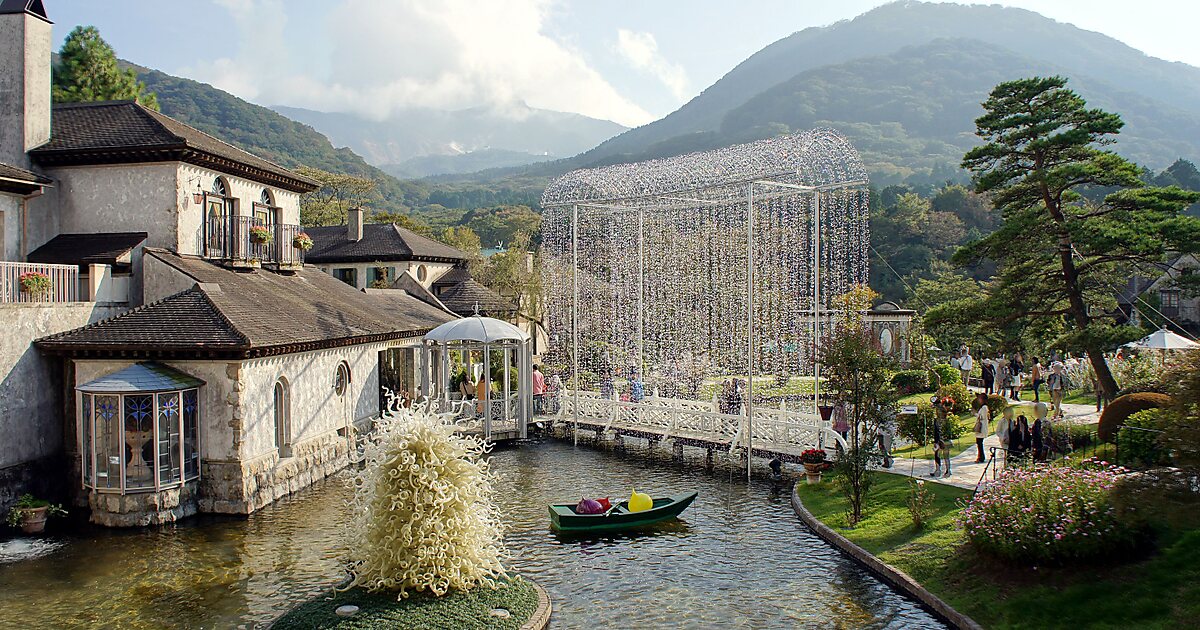Nomurano is more than just a village. It’s a living masterpiece. Tucked away in the heart of Japan, it draws travellers, artists, and culture lovers from all over the world. Known for its breathtaking glass artistry and deep cultural roots, Nomurano blends old-world charm with modern craftsmanship. From vibrant workshops to serene landscapes, this is a place where tradition meets creativity.
A Place Where Culture and Craft Live Together
Nomurano’s charm lies in how it preserves its heritage. The village isn’t just about producing glass—it’s about creating art that tells stories. Local artisans have passed their skills from one generation to the next, ensuring their glassmaking methods remain pure and authentic. These techniques have been refined over hundreds of years, making each piece unique.
The Origins of Nomurano’s Glassmaking
Glassmaking in Nomurano dates back centuries. While the exact start is unclear, historians believe the craft began when merchants brought glass from other regions. Local artists experimented with it, mixing traditional Japanese designs with new materials. Over time, Nomurano became Japan’s glassmaking capital.
The Village Layout and Atmosphere
Walking through Nomurano feels like stepping into a living postcard. Narrow cobblestone streets wind between traditional wooden houses and small artisan shops. The air carries the scent of fresh lacquer and the faint heat from glass furnaces. Locals greet visitors with warmth, and the pace of life is refreshingly calm compared to Japan’s busy cities.
The Beauty of Nomurano Glass
Nomurano glass is famous for its clarity, colour, and craftsmanship. Artisans use methods that blend precision with creativity. Pieces range from delicate teacups to elaborate sculptures. Each work reflects Japanese minimalism, yet often bursts with vibrant colour inspired by nature—blues of the sea, greens of the forest, and reds of autumn leaves.
How Glass Art is Made Here
In Nomurano, glassmaking is an art form, not a mass production process. Every stage—melting, shaping, cooling, and finishing—is done by hand. Many workshops are open to visitors, allowing them to watch the entire process. Some even offer short classes, where you can make your own small glass piece to take home.
Festivals That Celebrate the Craft
Nomurano hosts several festivals each year dedicated to glass art. The biggest is the Nomurano Glass Festival, held in early summer. The streets come alive with stalls, exhibitions, and live demonstrations. At night, illuminated glass sculptures transform the village into a sparkling wonderland.
Beyond Glass: A Rich Cultural Heritage
While glass is its signature, Nomurano is also known for its deep cultural roots. The village celebrates traditional music, dance, and seasonal rituals. Ancient shrines and temples dot the area, each with its own history. Many visitors come for the art but stay for the culture.
Local Food and Delicacies
Nomurano’s cuisine reflects the same attention to detail found in its glassmaking. Fresh seafood, locally grown vegetables, and seasonal dishes dominate the menu. Many restaurants serve meals in locally crafted glassware, making the dining experience even more special.
Nature and Scenic Beauty
Surrounded by mountains and rivers, Nomurano offers plenty for nature lovers. Hiking trails lead to panoramic views, while gentle rivers provide perfect picnic spots. Each season paints the village in a new light—cherry blossoms in spring, lush greens in summer, fiery maples in autumn, and snow-covered roofs in winter.
A Sustainable Approach to Tourism
Nomurano has embraced eco-friendly practices to preserve its beauty. Workshops use energy-efficient furnaces, and many businesses prioritise sustainable materials. The village encourages visitors to respect the environment and local traditions, ensuring it remains untouched for future generations.
Staying in Nomurano
Accommodation ranges from traditional ryokan inns to small guesthouses. Many ryokan offer tatami rooms, futon beds, and kaiseki meals, giving visitors an authentic Japanese stay. Hosts often share stories about Nomurano’s history, adding a personal touch to your visit.
Getting to Nomurano
Nomurano is accessible by train and bus from major Japanese cities. The journey itself is part of the experience—passing through scenic countryside and charming towns. Once there, the village is best explored on foot.
Travel Tips for Visitors
- Visit in different seasons to experience varied scenery
- Join a glassmaking workshop for a hands-on experience
- Try local dishes served in Nomurano glassware
- Respect local customs and traditions
- Shop directly from artisans to support the community
Why Nomurano Stands Out
There are many artisan villages in Japan, but Nomurano’s dedication to preserving tradition while embracing modern creativity sets it apart. It’s not just a place to buy beautiful glass—it’s a place to understand the soul behind the craft.
The Future of Nomurano
Nomurano’s artisans are working hard to ensure their skills are passed to the next generation. By blending traditional techniques with modern designs, they keep the craft alive while appealing to younger audiences. As more travellers seek authentic cultural experiences, Nomurano is poised to become even more popular.
Frequently Asked Questions
Is Nomurano worth visiting?
Yes. It offers a mix of culture, art, nature, and hospitality that few places can match.
Can I make my own glass art there?
Yes. Many workshops offer short beginner-friendly classes.
When is the best time to visit?
Spring and autumn are the most scenic, but each season has its charm.
How long should I stay?
One to two days is enough to explore the village and enjoy a workshop.
Conclusion
Nomurano is a destination where tradition lives on in every street, shop, and smile. Its glass artistry is world-class, but the heart of the village lies in its people, culture, and natural surroundings. Whether you come for the art, the scenery, or the food, Nomurano will leave you with memories—and maybe a piece of handmade glass to treasure forever.

